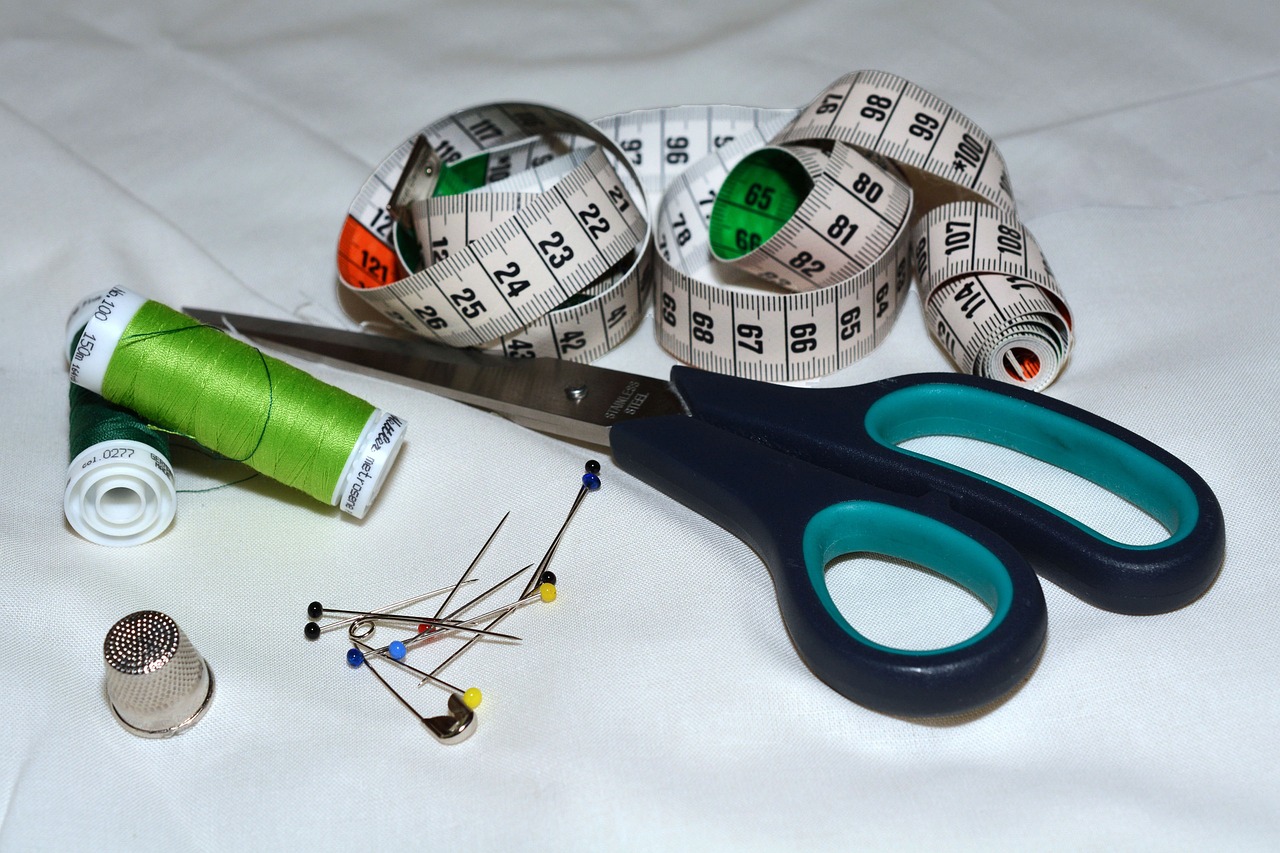2 Costume Shop Tools
Learning Outcomes
After finishing this unit, you should be able to do the following:
- Name and describe the function of all the costume shop tools listed below.
MEASURING AND MARKING
Yardstick
-
Description: A sturdy, straight measuring tool, usually made of wood or metal, measuring 36 inches (1 yard). Ideal for marking long, straight lines on fabric and checking the grainline or length of larger pattern pieces.
18″ Clear 2″ Ruler
-
Description: A transparent plastic ruler 2″ wide and 18″ long with precise grid markings. The clarity allows you to see pattern lines and fabric beneath while measuring or marking straight edges, grainlines, and hems. Useful for pattern drafting and adjusting designs.
Seam Gauge
-
Description: A small, metal or plastic ruler (usually 6 inches long) with a sliding marker. It’s perfect for measuring and marking small, repeated distances like hems, seam allowances, pleats, or buttonhole placements with precision.
Measuring Tape
-
Description: A flexible ruler made of fabric, plastic, or fiberglass, typically 60 inches long. It’s used to measure body dimensions, fabric lengths, and curved surfaces. Essential for taking accurate measurements when building or altering costumes.
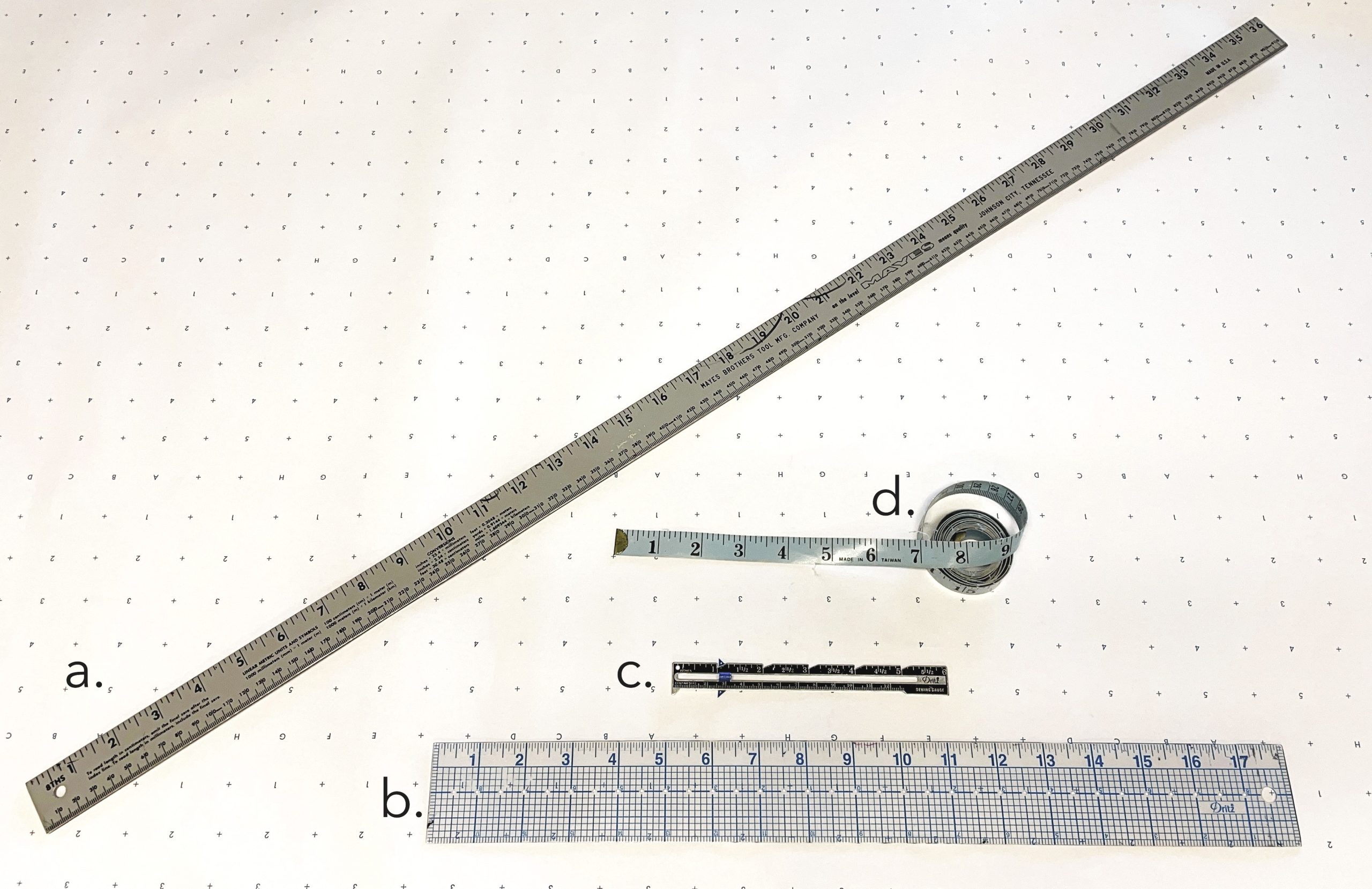
Fabric Marking Tools (General)
-
Description: A category that includes tailor’s chalk, marking pencils, disappearing ink pens, and washable markers designed specifically for fabric. These tools are used to draw or mark placement lines, notches, buttonholes, and design details on fabric surfaces. They provide temporary guidance for construction and are removable after sewing.
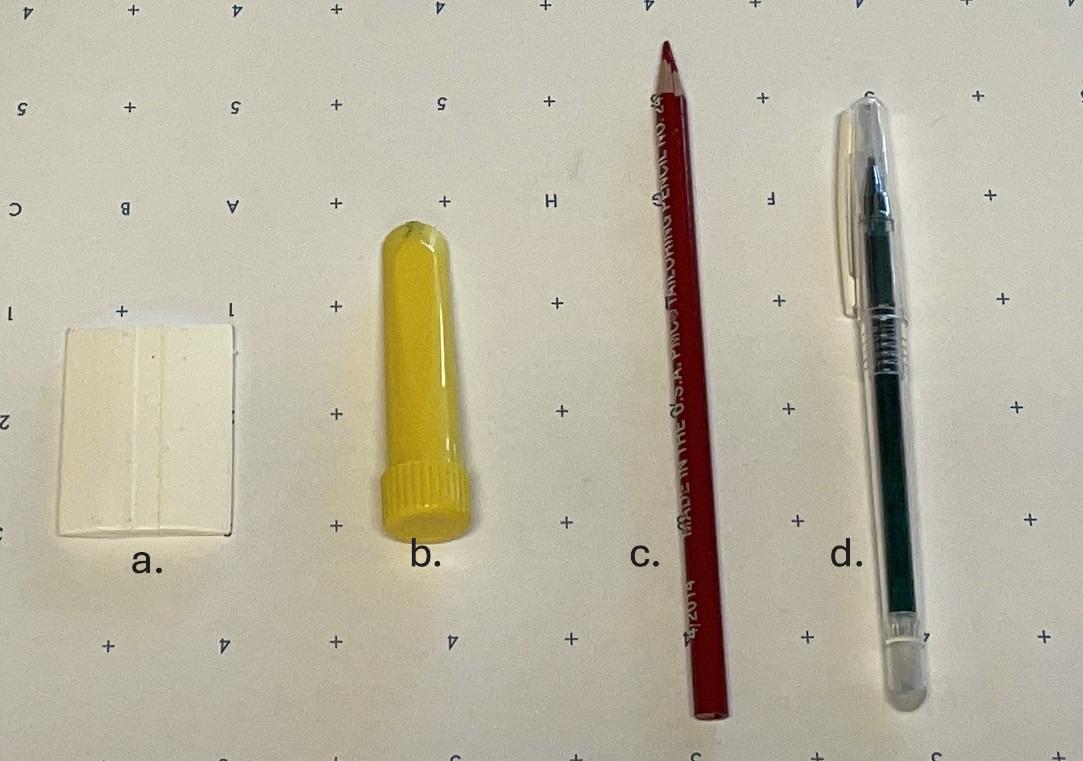
CUTTING
Fabric Scissors (shears)
- Description: Long, heavy-duty scissors designed for clean, straight cutting of fabric. Bent handles help keep fabric flat on table while cutting. They come in a variety of sizes and shapes and may be configured for right or left-handed cutters.
💡Tip: In the CMU Costume Shop Fabric Scissors are denoted by a ribbon on the handle and should not be used to cut anything but fabric.
Paper Scissors
- Description: Scissors designed specifically for cutting paper, cardboard, and patterns. They are not intended for fabric cutting, as using them on paper will dull fabric scissors. Costume shops keep paper scissors on hand for cutting pattern paper, interfacing, and other non-fabric materials during pattern making and prototyping.
Pinking Shears
-
Description: Scissors with a zigzag-shaped blade used to cut fabric edges. The zigzag pattern helps minimize fraying on raw fabric edges before finishing.
Thread Snips
-
Description: Small, spring-loaded scissors designed for snipping thread ends and trimming small pieces of fabric with precision.
Seam Ripper
-
Description: While primarily for removing stitches, a seam ripper can also be used to carefully cut into fabric at small points, such as opening buttonholes or slits.
Craft Knife (Utility Knife / X-Acto Knife)
-
Description: A small, sharp blade used for detailed fabric or interfacing cuts, often on non-woven materials or during pattern adjustments
Rotary Cutter
-
Description: A handheld tool with a circular blade that rolls along the fabric to make smooth, straight, or curved cuts. Ideal for cutting multiple layers of fabric at once, especially on a cutting mat.
Cutting Mat
-
Description: A protective surface used under rotary cutters and craft knives. It protects your table and prolongs blade life. Usually self-healing, with gridlines for measuring.
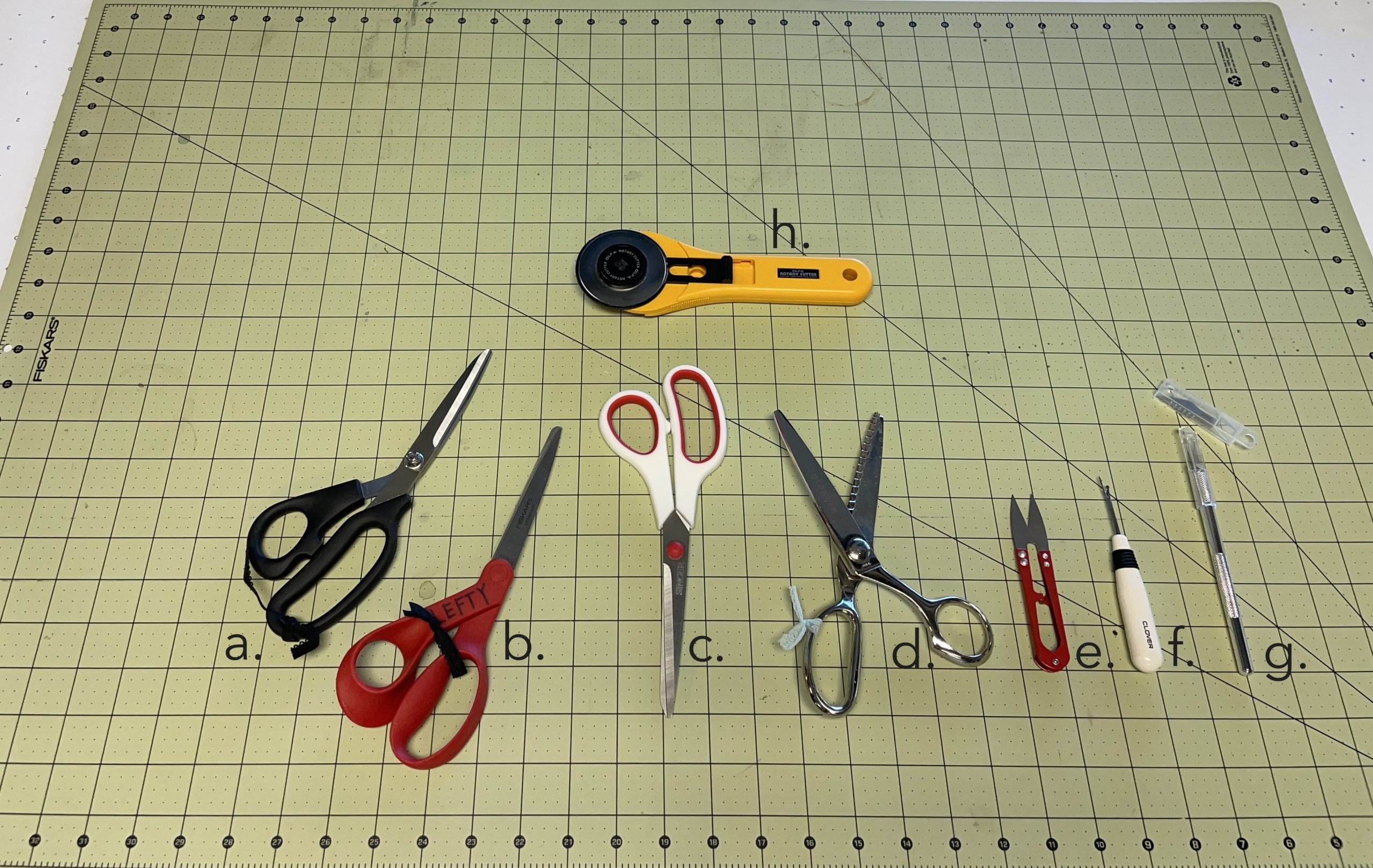
FASTENING
Hand Sewing Needles
-
Description: Small, slender needles with a pointed end and an eye for threading. They come in various sizes and types (sharps, betweens, embroidery) to suit different hand sewing tasks like stitching hems, attaching buttons, or adding decorative details. Essential for fine work and repairs.
Specialty Needles (e.g., Curved, Leather)
-
Description: Needles designed for specific tasks:
-
Curved needles: Used for sewing in tight or awkward places, upholstery work, or stitching in 3D forms like headpieces.
-
Leather needles (glover’s needles): Feature a triangular, cutting point to pierce through tough materials like leather or heavy vinyl without tearing.
These needles expand the range of fabrics and construction tasks a costume technician can handle.
-
Sewing Machine Needles
-
Description: Needles designed for use in sewing machines. They vary in size and type (e.g., universal, ballpoint, denim, leather) to suit different fabrics and sewing techniques. They differ from hand sewing needles in that the eye (threadable part) is in the point or tip of the needle. The right machine needle helps ensure even stitches, prevents skipped stitches, and protects fabric from damage.
Straight Pins
-
Description: Thin metal pins with a sharp point and a small head (glass, plastic, or metal). Used to temporarily hold fabric layers together before sewing or during fitting. Straight pins come in various lengths and thicknesses and are often stored in a pincushion for easy access.
Pin Magnets
-
Description: A magnetic dish or wand used to collect, hold, and retrieve pins and needles. Especially useful for quickly gathering dropped pins from the floor or work table. Pin magnets help maintain safety and efficiency in a busy costume shop.
Pincushions
-
Description: A small, stuffed cushion used to safely store straight pins and needles between use. Often weighted or shaped (tomato, wristband, novelty forms), pincushions keep pins organized and close at hand, reducing the risk of losing sharp tools on the work surface or floor.
Pushpins
-
Description: A long thumbtack with a cylindrical head. In sewing, they are used to secure fabric and patterns to a pinnable table top.
Safety Pins
-
Description: Pins with a spring mechanism and a clasp that covers the sharp point for safety. Used for quick fixes, holding layers temporarily when pins might fall out, or emergency closures on costumes. Available in various sizes and strengths for light or heavy fabrics.
Thimbles
-
Description: A small cap made of metal or leather and worn over one finger to protect it while pushing a needle through fabric.

THREAD
All-Purpose Thread
-
Description: A versatile thread suitable for most sewing tasks. Typically made from polyester or a polyester-cotton blend, all-purpose thread works well for hand and machine sewing on a wide range of fabrics and is the standard choice for general costume construction. The method by which the thread is wound on the spool determines its orientation on the machine’s spool pin for proper unwinding during sewing. Stacked thread is wound with the threads parallel to each other and the top/bottom of the spool and sits on a vertical spool pin. Criss-cross thread is wound in a diagonal criss-crossing method and works best on a horizontal spool pin.
Heavy Duty Thread
-
Description: A thicker, stronger thread designed for sewing heavy fabrics, such as denim, canvas, upholstery, or leather. Often made from polyester or nylon, it provides extra durability for seams that will bear significant stress or wear. It may be called button, upholstery, or heavy duty thread.
Specialty Threads
-
Description: Threads designed for specific functions or decorative purposes. This category includes elastic thread, metallic thread, topstitching thread, buttonhole twist, and invisible (monofilament) thread. Each type serves a unique purpose, such as adding stretch, creating visual accents, or sewing nearly invisible seams.
Silamide
-
Description: A pre-waxed, twisted nylon thread commonly used in hand sewing, particularly in costume, millinery, and beading work. Known for its strength, durability, and resistance to tangling, silamide is ideal for stitching that requires both flexibility and security.
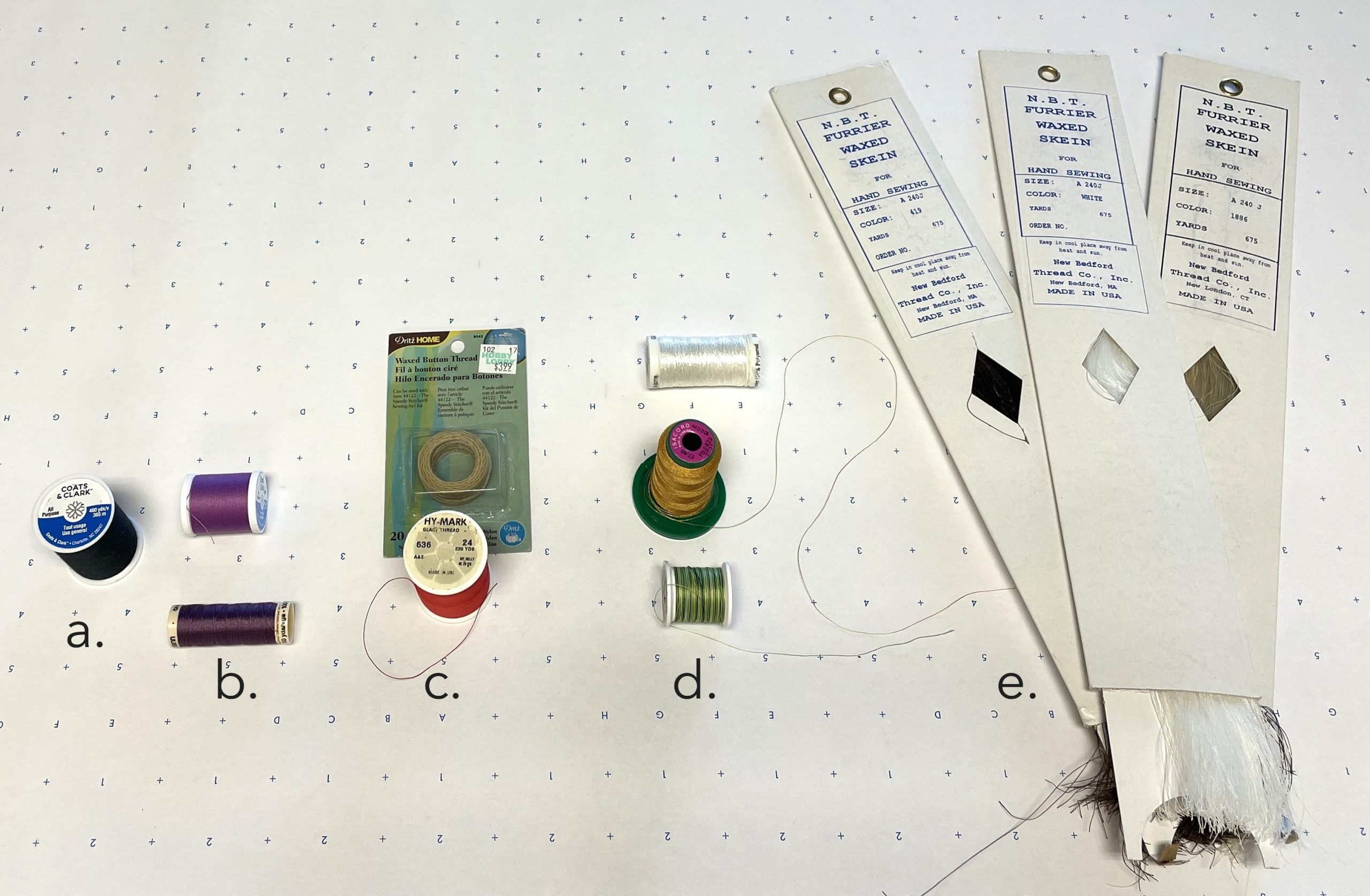
IRONING
Industrial Gravity Feed Iron
-
Description: A heavy-duty iron designed for continuous professional use. It features a separate water reservoir (usually hanging above the workstation) that feeds water to the iron by gravity for steam production. It provides consistent heat and powerful steam for pressing large or heavy costumes efficiently.
Ironing Table
-
Description: A sturdy, heat-resistant table designed for pressing garments. Often larger and more stable than household ironing boards, ironing tables provide a firm surface that can support heavy fabrics and large costume pieces during pressing.
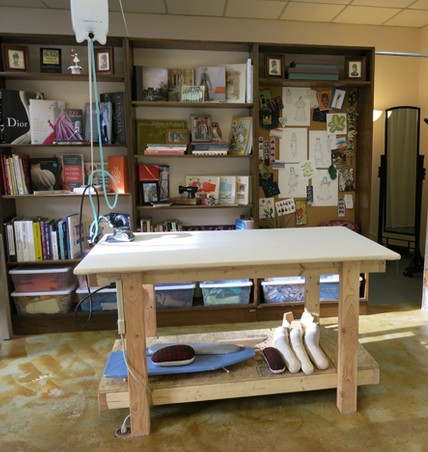 |
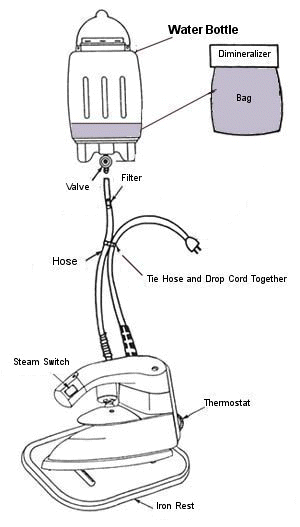 |
Sleeve Board
-
Description: A small, narrow ironing board designed for pressing sleeves, pant legs, and other tubular or hard-to-reach garment sections. It allows precise pressing without creating unwanted creases.
Tailor’s Ham
-
Description: A tightly stuffed, ham-shaped cushion used for pressing curved seams, darts, princess lines, and other shaped areas of garments. It helps maintain the garment’s shape while pressing without flattening the curves.
Point Presser / Clapper
-
Description: A wooden tool with two functions:
-
Point presser: A narrow edge used to press into tight corners and points, such as collars and lapels.
-
Clapper: The flat surface is used to apply pressure after steam pressing, helping to set crisp creases and flatten seams.
-
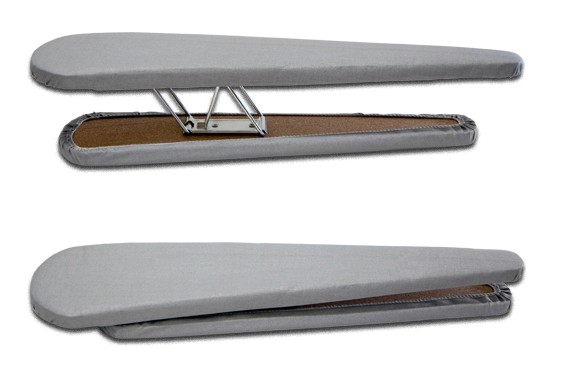 |
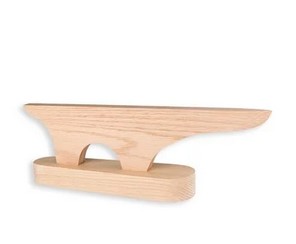 |
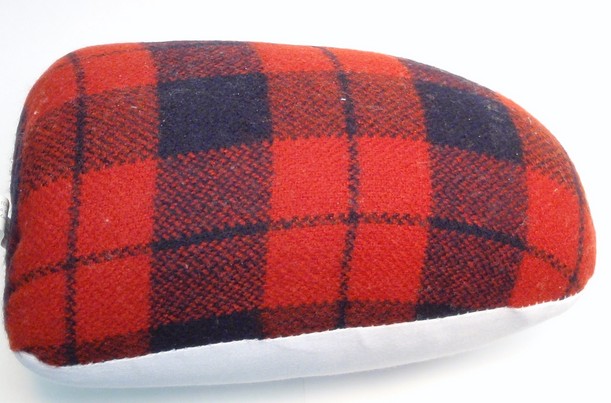 |
Pressing Cloth
-
Description: A lightweight cloth (often cotton, silk organza, or muslin) placed between the iron and garment to prevent scorching, shiny marks, or fabric damage. It allows steam and heat through while protecting delicate surfaces.
Iron Cleaner
-
Description: A cleaning product (paste, stick, or liquid) designed to remove residue, starch buildup, and scorched materials from an iron’s soleplate. Keeping the iron clean ensures it glides smoothly and prevents staining garments.
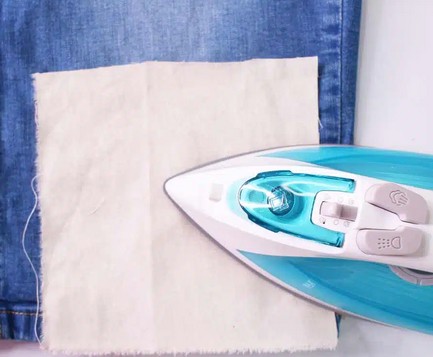 |
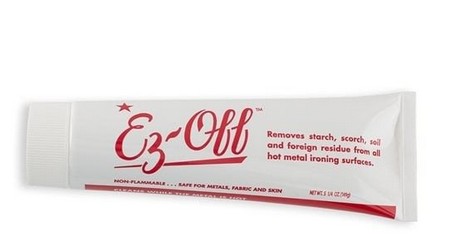 |
DRAFTING & PATTERNING
Tracing Paper and Tracing Wheels
-
Description:
-
Tracing paper: A semi-transparent paper used to transfer pattern markings, such as darts, pleats, and seamlines, onto fabric or other paper. It often has a chalk or waxy coating that leaves a visible line when pressure is applied.
-
Tracing wheel: A tool with a small, toothed or smooth-edged wheel at the end of a handle. Rolled over tracing paper, it transfers pattern markings to fabric or another sheet of paper. Ideal for duplicating or adjusting patterns without cutting originals.
-
Pouncing Wheel
-
Description: A spiked wheel similar to a tracing wheel but with sharper points. Used to perforate paper patterns so that chalk or powder can be “pounced” or brushed through the holes to mark the fabric. Common in theatrical and couture costume shops for transferring detailed markings.
Pattern Paper
-
Description: Large sheets of lightweight, durable paper used for drafting, tracing, and modifying sewing patterns. Pattern paper may have printed grids or dots to help with alignment and accurate measurements. It allows designers to create and preserve custom patterns.
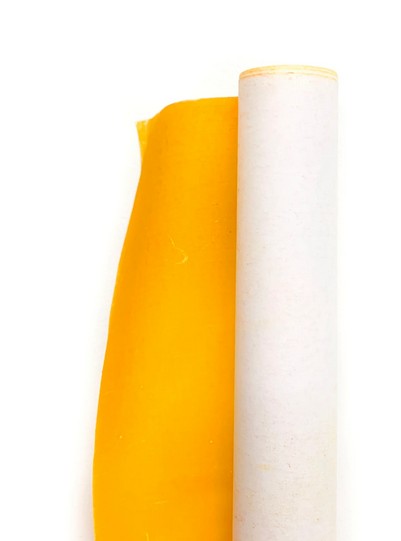 |
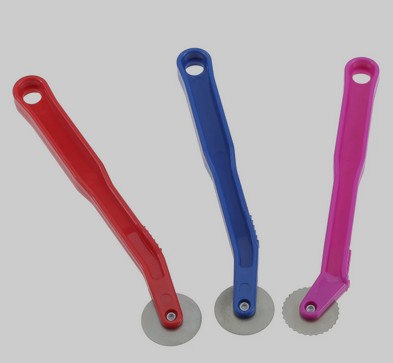 |
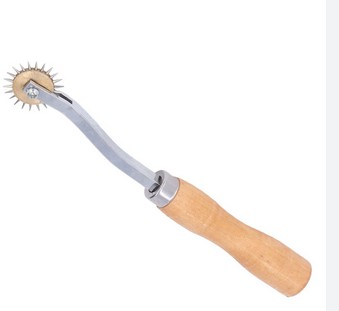 |
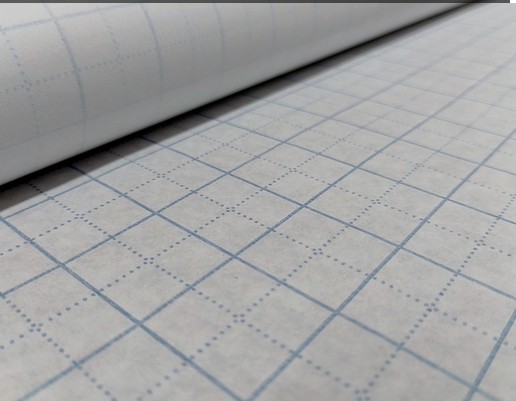 |
Curves (French Curve, Hip Curve, Armhole Curve)
-
Description: Specialized rulers made from plastic or metal, designed to help draft smooth, accurate curves on patterns. They mimic typical curved areas on the human body.
-
French curves assist with smaller curves like necklines, armholes or crotch curves.
-
Hip curves shape waist-to-hip lines and hip to thigh curves.
-
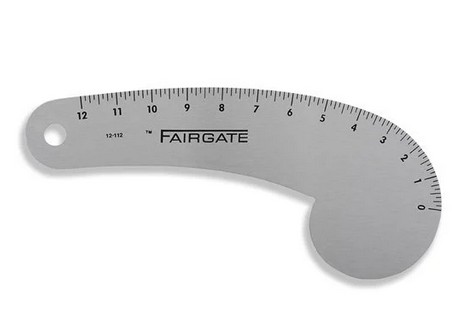 |
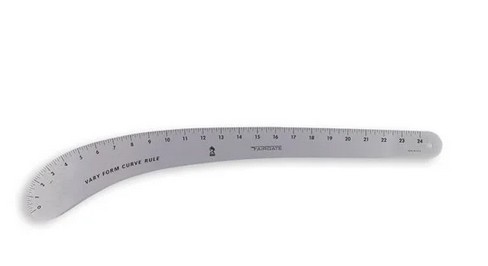 |
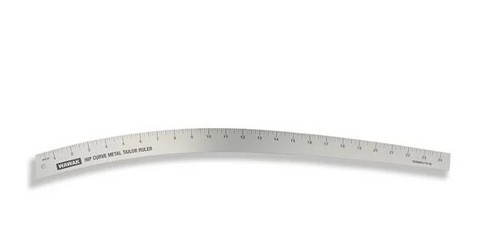 |
Slopers or Body Blocks
-
Description: A basic, custom-fitted pattern (also called a block) that represents the body’s dimensions without style lines or seam allowances. It serves as a starting point for creating original patterns or modifying existing ones to fit a specific performer or character.
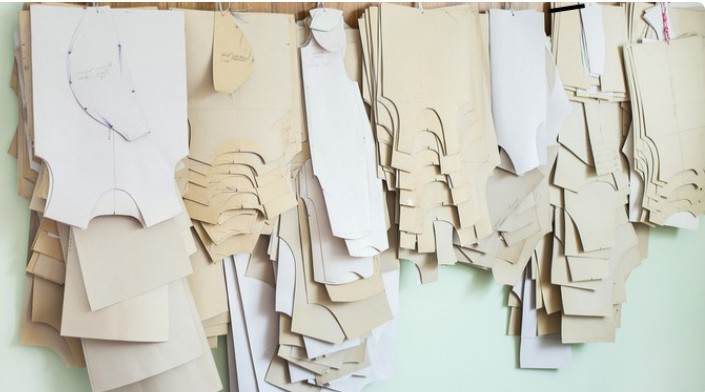 |
Draping Mannequins (Dress Forms)
-
Description: Three-dimensional body replicas, usually made of padded fabric over a hard inner core, used as a base for draping fabric and constructing patterns. Draping mannequins represent standard or custom body measurements and allow designers to shape, pin, and mark fabric directly on the form. They are essential for visualizing and adjusting fit, silhouette, and style lines in costume creation. They come in standardized sizes and may or may not include arm attachments or legs. The draper will pad them out to more precisely match an actor’s measurements.
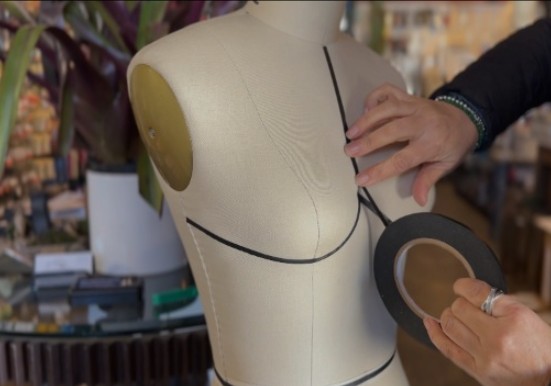 |
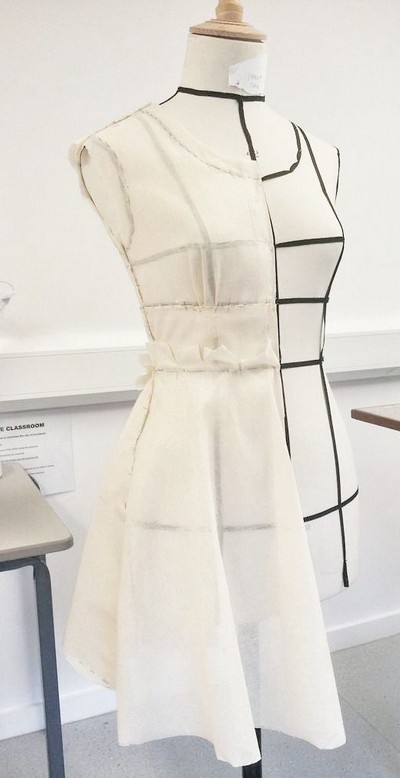 |
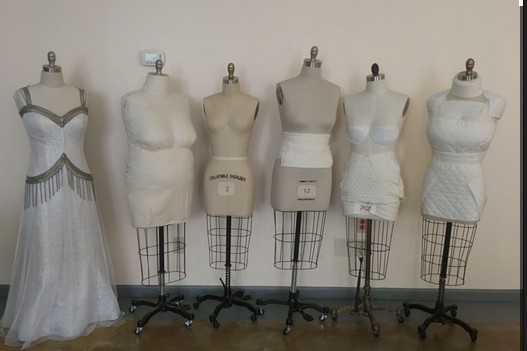 |
